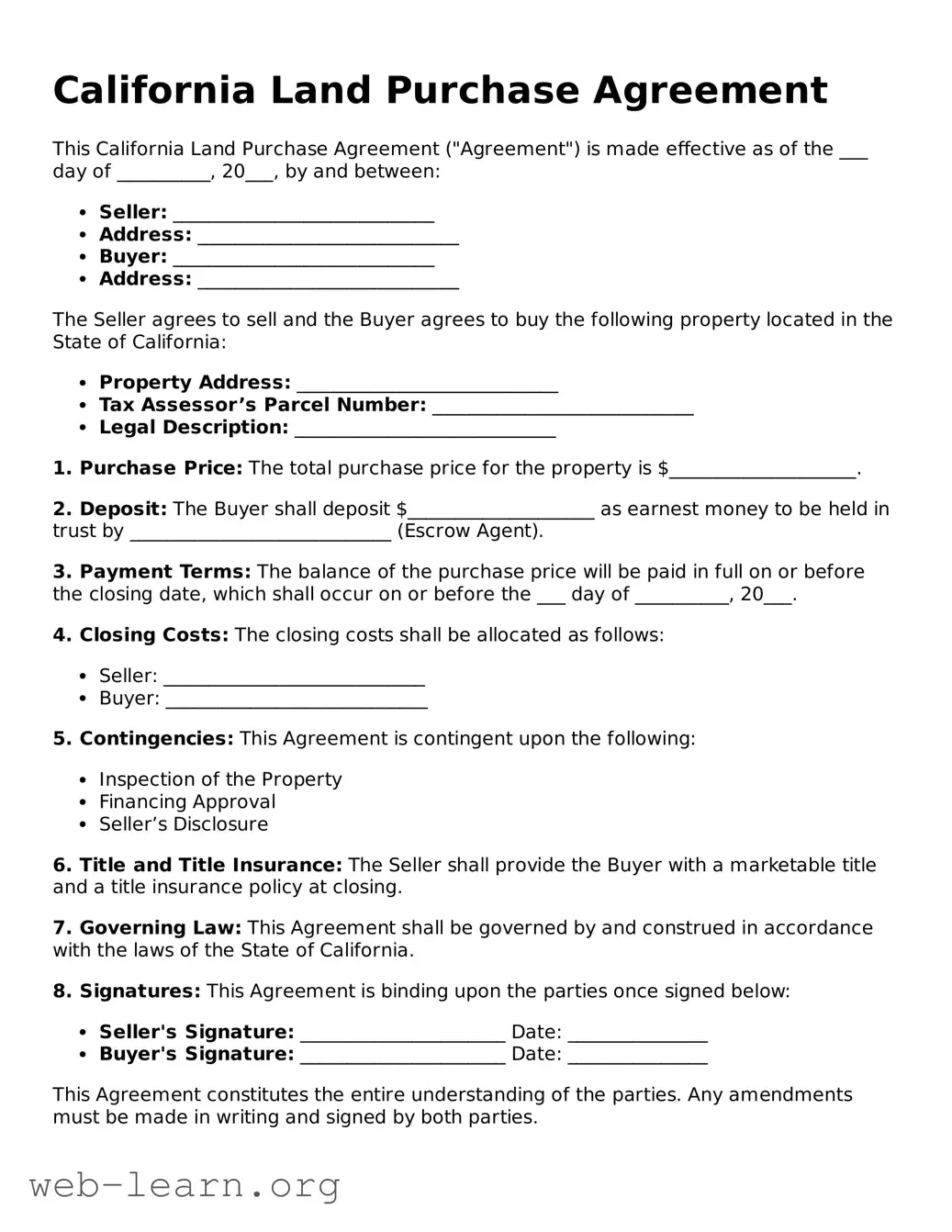California Land Purchase Agreement
This California Land Purchase Agreement ("Agreement") is made effective as of the ___ day of __________, 20___, by and between:
- Seller: ____________________________
- Address: ____________________________
- Buyer: ____________________________
- Address: ____________________________
The Seller agrees to sell and the Buyer agrees to buy the following property located in the State of California:
- Property Address: ____________________________
- Tax Assessor’s Parcel Number: ____________________________
- Legal Description: ____________________________
1. Purchase Price: The total purchase price for the property is $____________________.
2. Deposit: The Buyer shall deposit $____________________ as earnest money to be held in trust by ____________________________ (Escrow Agent).
3. Payment Terms: The balance of the purchase price will be paid in full on or before the closing date, which shall occur on or before the ___ day of __________, 20___.
4. Closing Costs: The closing costs shall be allocated as follows:
- Seller: ____________________________
- Buyer: ____________________________
5. Contingencies: This Agreement is contingent upon the following:
- Inspection of the Property
- Financing Approval
- Seller’s Disclosure
6. Title and Title Insurance: The Seller shall provide the Buyer with a marketable title and a title insurance policy at closing.
7. Governing Law: This Agreement shall be governed by and construed in accordance with the laws of the State of California.
8. Signatures: This Agreement is binding upon the parties once signed below:
- Seller's Signature: ______________________ Date: _______________
- Buyer's Signature: ______________________ Date: _______________
This Agreement constitutes the entire understanding of the parties. Any amendments must be made in writing and signed by both parties.
